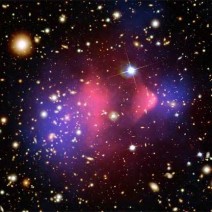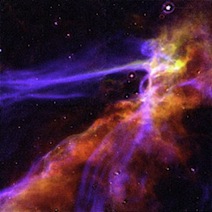A researcher has suggested that dark matter might simply be an illusion, rather than some unknown non-baryonic matter. Assuming that antimatter has a negative gravitational charge, the “illusion” would be explained by the resulting gravitational polarization of the quantum vacuum by ordinary matter.
The need for dark matter first appeared with the galaxy rotation problem. Theoretically, the farther a star is from the galactic center, the lower its orbital velocity is. This is not what observations have shown: outside the galactic bulge, the speed is nearly constant. The addition of extra invisible mass within the galactic halo, called dark matter, is able to explain this discrepancy.
Although dark matter gives good results, the problem is that so far every attempt to detect dark particles has failed. Dragan S. Hajdukovic from CERN, Geneva, Switzerland, suggests a completely different solution to the problem. He decides to assume that particles and anti-particles have an opposite gravitational charge (in addition to their opposite electrical charge). Consequently, virtual particle-antiparticle pairs in the quantum vacuum would be gravitational dipoles: the quantum vacuum could be considered as a dipolar fluid.
Because of the repulsion between opposite gravitational charges, the gravitational field outside a massive baryonic (made of ordinary matter) object should be stronger than predicted by Newton’s law. However, Newton’s law is not violated, just like Coulomb’s law is not violated in the case of electric polarization.
Would gravitational polarization of the vacuum produce the same effect as dark matter? According to Hajdukovic’s calculations, yes. The size of our Galaxy’s halo as well at the mass enclosed within a radius of 60 kpc (200,000 light-years) are in good agreement with current estimates.
So, is dark matter an illusion created by the gravitational repulsion between matter and antimatter and the corresponding gravitational polarization of the quantum vacuum by the existing baryonic matter? Maybe, but it is much to early to give an answer. As the author writes, this new hypothesis can explain the rotational curves of galaxies, but dark matter is also used to explain other phenomena: density fluctuations and the structure formation of the Universe are two examples.
A lot of work is needed to see if gravitational vacuum polarization can account for other phenomena, all well explained by dark matter. Also, this hypothesis relies on the assumption that antimatter has a negative gravitational charge: so far, there is absolutely no evidence supporting that idea.


